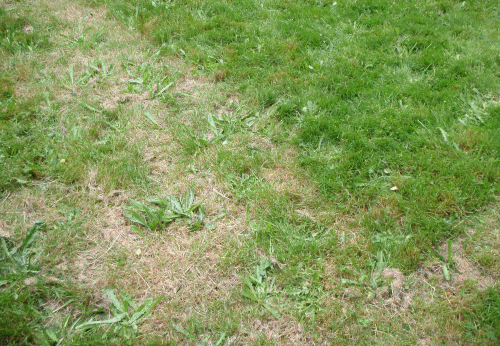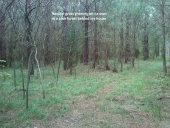








 1
1




Tom Pavlo wrote:It was always my understanding that moss was a sign of your pH being too low. The lime should correct that. A couple of years ago, I had some moss growing between my grass. Once I limed, the grass grew in better and I haven't seen the moss since.




Tom Pavlo wrote:It was always my understanding that moss was a sign of your pH being too low. The lime should correct that. A couple of years ago, I had some moss growing between my grass. Once I limed, the grass grew in better and I haven't seen the moss since.
I think that your best plan would be to lime it up to a ph of 6.5-6.8 and then just do what you can to get the grass to grow thicker.
Why do you add sand to your lawn? The structure of your soil will dictate how much lime you are going to have to apply. For example, the dirt in my front and back yards are different enough that I need to apply double the amount of lime in the back to get the same effect. This has something to do with the soil weight and the front being more sandy.
I also believe that Paul generally discourages aerating as he sees it a waste of time.








Rich Pasto wrote:water and pH are definitely culprits, but you need to also look at how much sunlight your yard gets. The lower sunlight levels in winter may be helping the moss spread/return every year.
Food for thought, what are the drawbacks to moss beside the cosmetics? You basically dont have to do anything to it, and it will develop into a soft green carpet if left undisturbed. I remember moss yards from back east and they were really quite nice.





 2
2









Tom OHern wrote:I have been working for years to get more moss in my lawn. That and clover. Why would I do this? The more moss and clover you have, the less you have to mow and water. How can you not want that?
















"And they'll carry our dreams to the stars from the canyons of Mars." http://answersingenes.blogspot.co.uk/2012/06/one-way-to-mars.html Tw: @shanemuk
 1
1




David Chritchly wrote:
If I apply lime and compost I expect it will encourage the moss right? Should I get rid of the moss prior to spring maintenance? I'd like to aerate and apply sand to improve drainage but its going to be hard to find that time this year. Should I ignore the moss this year?
I'm almost to the point of just accepting the moss because it does require no maintenance and feels great on your feet when coming out of the lake.
“Enough is as good as a feast"
-Mary Poppins





Pastured pork and beef on Vashon Island, WA.





There are certain parts of my yard that I want to encourage moss growth (Its like a soft green carpet!) so I imagine I should purposely lower the PH somehow...
List of Bryant RedHawk's Epic Soil Series Threads We love visitors, that's why we live in a secluded cabin deep in the woods. "Buzzard's Roost (Asnikiye Heca) Farm." Promoting permaculture to save our planet.




I have a bad crabgrass problem. I mean bad. Like, so bad that the TV show Deadliest Catch filmed an episode in my yard last season.
















List of Bryant RedHawk's Epic Soil Series Threads We love visitors, that's why we live in a secluded cabin deep in the woods. "Buzzard's Roost (Asnikiye Heca) Farm." Promoting permaculture to save our planet.

|
This tiny ad is wafer thin:
Freaky Cheap Heat - 2 hour movie - HD streaming
https://permies.com/wiki/238453/Freaky-Cheap-Heat-hour-movie
|


